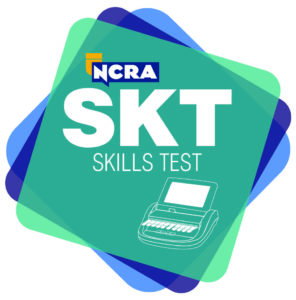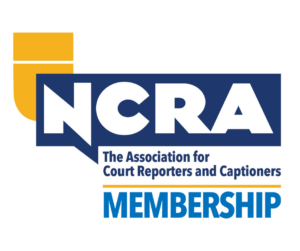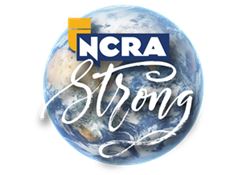
By Anthony D. Frisolone
The coronavirus pandemic has forced many professionals to rethink how and where they work. This holds true for official court reporters, most of whom are used to working in the courtroom. Working remotely is a mostly foreign concept for many official court reporters.
For me, this all changed the week of March 16, 2020. We were informed by our superiors that we would be moving from a modified work schedule to a teleworking format.
Get in front of the situation: Make sure the courts know what you can do
The first thing any official reporter should do is take charge of the situation by having a talk with your judge or your supervisor and tell them that you are ready to do your job from home. During a conversation with my supervisor, I mentioned we can report proceedings remotely over the phone or by video. After an email exchange, she requested a list of what is available to the reporters to do our job from home. I presented three options: a better, best, and worst scenario of what’s available and what court reporters would find to be a good working situation. Respectively, the scenarios were using video conferencing, using telephone conferencing, and as a last resort, transcribing from the recorded phone calls. I included in my list products such as Stenograph’s CaseViewNet to provide realtime streaming if there was a deaf or hard-of-hearing person on the call.
It seems simple, but I credit what I learned at NCRA’s Legislative Boot Camp, which was what led me to advocate for the court reporters. I call it advocacy, because that is really what it was, but it was some conversations, text messages, and the emails mentioned above to show my supervisor what we could do. At first, we saw many of our judges were working from home and recording their conferences, a method which bypassed the live reporter. Ultimately, I made a proposal to the chief court reporter to advise the reporters to bring their machines home to cover court. I was given the okay by the chief reporter, and I spoke to my colleagues, who all agreed to do this. I again wrote to my supervisor and said we were ready to work from home and cover court remotely. She agreed this was a good idea but wanted a list of who would volunteer to cover court from home. This was a great opportunity for us as reporters to take charge of the situation by saying that we are available and ready to continue doing our jobs from home.
Packing up and setting up again
I began the process of breaking camp, so to speak, on March 20. I cleaned my office, turned off anything that wasn’t essential, and backed up work to take home. I left my desktop computer on, so I could use Google Desktop to remotely retrieve files. I made sure my Dropbox and Case CATalyst Cloud Backup accounts were working properly for an added layer of protection for the storage and retrieval of my work. I had my machine packed up with everything necessary to report from home.
I did forget both of the chargers for my steno machine. So much for my “two is one and one is none” motto. It only works when you actually have what you need in your bag. I bought a charger when I got home. Leaving that day was far from the usual Friday departure, since I didn’t know when I would be coming back.
The new normal and my remote office
I went home and set up my basement for the first day of telework. My basement is the family gym, music room, game room, and now my home office. My spare office chair was set up with a computer table for my laptop and iPad. I had an extra power strip with a surge protector. I used my flat screen TV as a monitor for easier editing and for viewing my realtime while reporting. My telework setup consisted of my writer, laptop, iPad, and my iPhone.
Admittedly, I had no plan for working at home. I knew that I had to have structure in my day to provide a sense of normalcy. Living during a global pandemic can be nerve-wracking, and establishing a routine is important from the first day. I read articles online about teleworking, and my plan started to take shape. My goal was to mimic my workday and do everything at the exact time like I usually do. I woke up at my usual time, and I did all the things I do before leaving the house in the morning. I exercise just like I do at the courthouse gym at around 7:30, and then I get behind my computer at around 8:30 a.m. to read emails and do work before court. I try to have lunch at the same time I normally do. At night, I go to bed at the same time I normally do to keep my body’s clock on track for when things do get back to normal.
I will say it is nice to be home with my family and seeing them every day. Not having to sit in morning traffic is something I don’t miss either. So that’s a plus for me to teleworking.
My coworkers and I stay in contact using WhatsApp. We created a group chat to communicate with each other quickly. We have a separate group chat with our supervisor for court-related communication.
Telephone conferences can be challenging. To make them less challenging, I wrote guidelines for attorneys to follow that I email to each of them before the conference. I contacted the judge’s court clerk and got the telephone number and access code for the call. I’m keeping a list of those numbers for quick reference or to pass along to my coworkers. After I dial in, I report the proceeding as usual. I place my phone next to the internal mic on my computer for better sound quality. My writer has a mic attached as a backup. The telephone conferencing system that my court has uses a recording backup. If I need to interrupt, I do so. Speech can get garbled or attorneys with accents can make this challenging. At the beginning of the conference, I introduce myself to the parties to establish my role.
In addition to teleconferencing, we have one judge who prefers to use Jabber for video conferencing. It works, but there were some glitches that we resolved by working with our court’s IT department.
Engage: Don’t let social distancing prevent you from connecting
I wanted to fill my day, so I decided to give back to the profession. I feel that it is important to stay connected with each other and to build a sense of camaraderie. I am using my other role as a Stenograph Case CATalyst trainer to set up free or low-cost remote training to reporters as a way to learn new skills and to focus on something other than the news.
I first provided training to court reporters in the federal courts. In addition, I provided free or low-cost training to long-time clients who aren’t in the federal system. I followed up with an online steno swap for federal reporters. This has become a popular weekly gathering during the time I’ve been home. At the time of this writing, I am working on a third webinar. An attendee wrote to me after the first webinar and said that this helped her cope with the situation by feeling more connected to the outside world.
This situation is not ideal and certainly something none of us have ever experienced. By taking control of the situation and working with the key stakeholders in the courthouse, we ensured that court reporters will continue to have a place at least in our courthouse. At home, creating a routine, exercising, eating right, volunteering my time, and staying in touch with family and friends to develop deeper connections has helped to make this situation easier to deal with and relieve the stress of the situation.
Anthony D. Frisolone, FAPR, RDR, CRR, CRI, is a federal official court reporter in the Eastern District of New York courthouse located in Brooklyn, N.Y. He is also a Stenograph Certified Case CATalyst Trainer. He would like to extend his special thanks to Monette Benoit who offered some great suggestions. Frisolone can be reached at AFrisolone@aol.com








